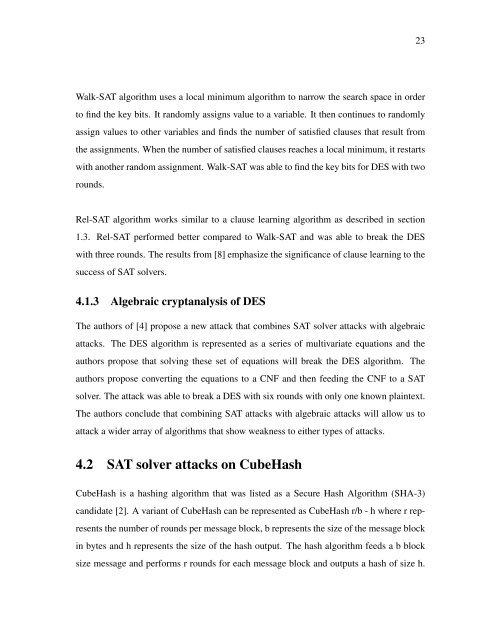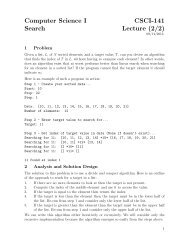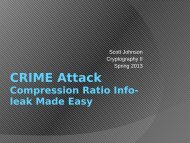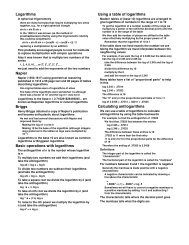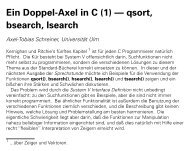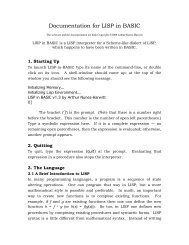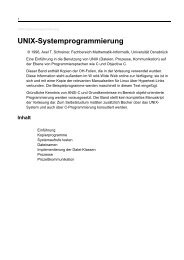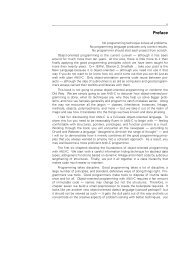SAT Based Attacks on SipHash - Department of Computer Science
SAT Based Attacks on SipHash - Department of Computer Science
SAT Based Attacks on SipHash - Department of Computer Science
You also want an ePaper? Increase the reach of your titles
YUMPU automatically turns print PDFs into web optimized ePapers that Google loves.
23<br />
Walk-<str<strong>on</strong>g>SAT</str<strong>on</strong>g> algorithm uses a local minimum algorithm to narrow the search space in order<br />
to find the key bits. It randomly assigns value to a variable. It then c<strong>on</strong>tinues to randomly<br />
assign values to other variables and finds the number <strong>of</strong> satisfied clauses that result from<br />
the assignments. When the number <strong>of</strong> satisfied clauses reaches a local minimum, it restarts<br />
with another random assignment. Walk-<str<strong>on</strong>g>SAT</str<strong>on</strong>g> was able to find the key bits for DES with two<br />
rounds.<br />
Rel-<str<strong>on</strong>g>SAT</str<strong>on</strong>g> algorithm works similar to a clause learning algorithm as described in secti<strong>on</strong><br />
1.3. Rel-<str<strong>on</strong>g>SAT</str<strong>on</strong>g> performed better compared to Walk-<str<strong>on</strong>g>SAT</str<strong>on</strong>g> and was able to break the DES<br />
with three rounds. The results from [8] emphasize the significance <strong>of</strong> clause learning to the<br />
success <strong>of</strong> <str<strong>on</strong>g>SAT</str<strong>on</strong>g> solvers.<br />
4.1.3 Algebraic cryptanalysis <strong>of</strong> DES<br />
The authors <strong>of</strong> [4] propose a new attack that combines <str<strong>on</strong>g>SAT</str<strong>on</strong>g> solver attacks with algebraic<br />
attacks. The DES algorithm is represented as a series <strong>of</strong> multivariate equati<strong>on</strong>s and the<br />
authors propose that solving these set <strong>of</strong> equati<strong>on</strong>s will break the DES algorithm. The<br />
authors propose c<strong>on</strong>verting the equati<strong>on</strong>s to a CNF and then feeding the CNF to a <str<strong>on</strong>g>SAT</str<strong>on</strong>g><br />
solver. The attack was able to break a DES with six rounds with <strong>on</strong>ly <strong>on</strong>e known plaintext.<br />
The authors c<strong>on</strong>clude that combining <str<strong>on</strong>g>SAT</str<strong>on</strong>g> attacks with algebraic attacks will allow us to<br />
attack a wider array <strong>of</strong> algorithms that show weakness to either types <strong>of</strong> attacks.<br />
4.2 <str<strong>on</strong>g>SAT</str<strong>on</strong>g> solver attacks <strong>on</strong> CubeHash<br />
CubeHash is a hashing algorithm that was listed as a Secure Hash Algorithm (SHA-3)<br />
candidate [2]. A variant <strong>of</strong> CubeHash can be represented as CubeHash r/b - h where r represents<br />
the number <strong>of</strong> rounds per message block, b represents the size <strong>of</strong> the message block<br />
in bytes and h represents the size <strong>of</strong> the hash output. The hash algorithm feeds a b block<br />
size message and performs r rounds for each message block and outputs a hash <strong>of</strong> size h.


